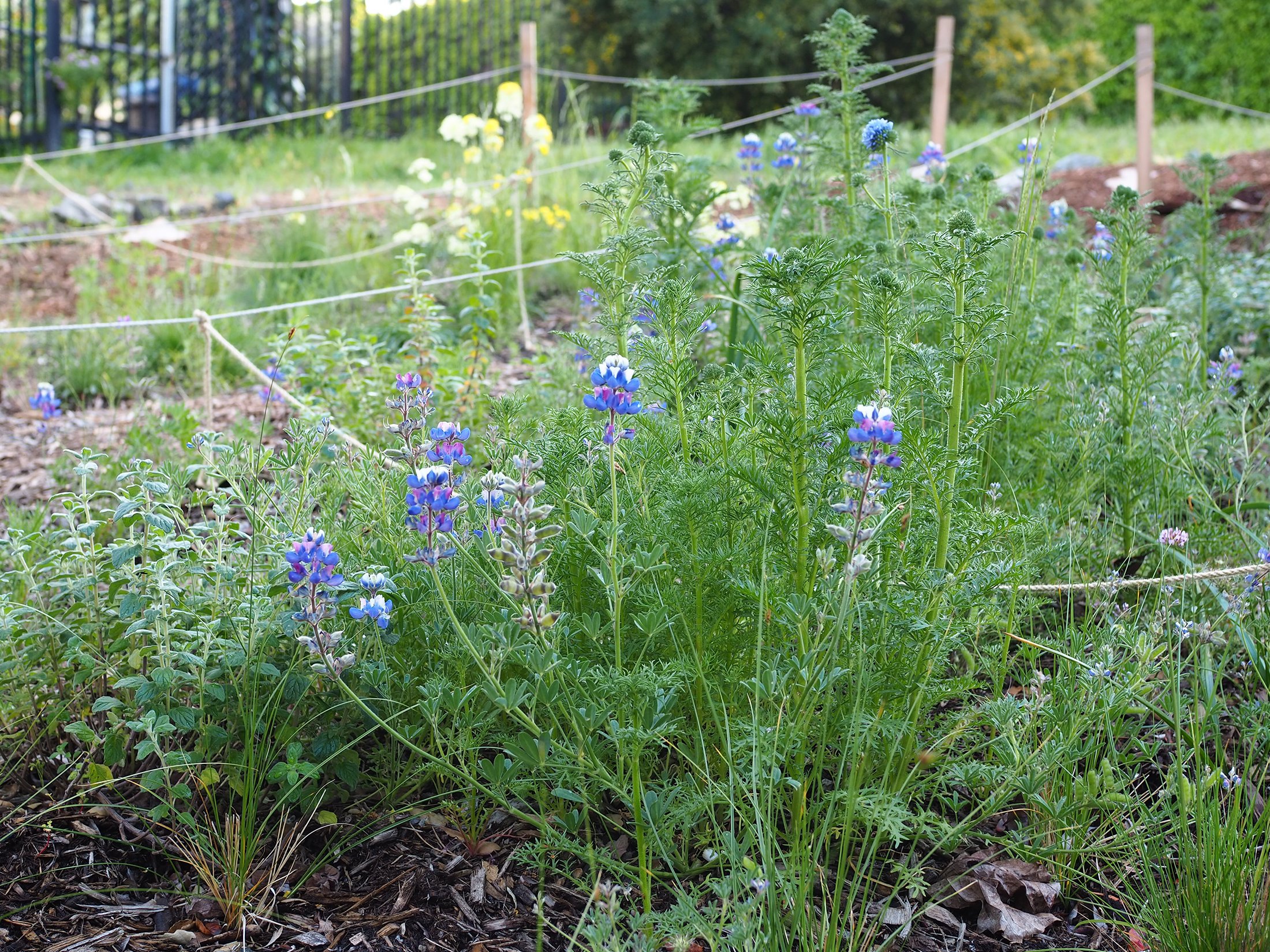
Contributor
- Topics: Archive
“Gardens are for people,” proclaimed Thomas Church, one of the twentieth century’s most prominent landscape architects; his legacy is the holistic integration of the garden into everyday life. Outdoor living and “California Style” can be directly traced to Church’s Modernist ideas of gardens serving the needs of their inhabitants in a utilitarian and visually pleasing manner.
Well, everybody’s got to eat and these days, growing is not just for gardeners. Today, eco-activists and gourmet chefs unite in their quest for beautiful, healthy, and really good food. The proof is in the pudding—or, rather, the publication—of these two recent titles.
Graham Kerr, known to a generation (OK, my generation) as the Galloping Gourmet, has spent a lifetime cultivating an international culinary career on television and in more than twenty published cookbooks. Going beyond his august culinary credentials, Growing at the Speed of Life recounts a year in the life of Kerr’s first kitchen garden, an endeavor he undertook to promote healthful, garden-to-table eating and in response to America’s growing obesity epidemic.
What he discovered in the process was nothing less than life changing for this busy, productive, and acclaimed professional. “To grow a vegetable, harvest it in its prime, and cook and eat it on that day is to relish food in a whole new way.” The continuum of experience from seed to soil to plate required a new sort of patience, effort, and commitment, as he learned to follow the rhythm and timetable of the seasons in his Pacific Northwest garden. Kerr has christened the process “the speed of life,” and its discovery is perhaps the biggest takeaway lesson of his young gardening career.
Andrea Belamy, founder of the popular blog Heavy Petal, is the voice of a new generation of gardeners, often without a patch of ground to call their own, who creatively cultivate gardens wherever they can.
No yard? No problem! In Sugarsnaps and Strawberries, Belamy offers beginning gardeners yes-you-can encouragement and simple, step-by-step solutions for hip, creative, resourceful, edible, and beautiful gardens that feed both body and soul. From pots on the patio to garden sharing and the development of growing spaces at school and the work place, she opens our eyes to potential garden space just waiting to be brought to fruitful life.
Motivation for the current vegetable zeitgeist around us is as varied as the spectrum of individuals participating in a practice almost as old as the Garden itself, and includes independence, sufficiency, economics, health, environmental and social politics, and—let’s not forget—flavor!
Technically illicit gardens cultivated on tracts of abandoned land represent the new urban and sometimes gritty frontier left behind in the wake of economic blight. The waiting list for community garden space grows faster than weeds in the summer sun, and metropolitan farmers markets are enjoying the kind of renaissance that bankers only aspire to.
Meanwhile, out in the suburbs, carefully orchestrated perennial borders and sweeping lawns are giving way to fruit trees, berries, and mixed plantings where ornamentals and edibles tumble together in a riotous and delicious composition of food and good taste.
So what do the Galloping Gourmet and a poster child for Gen X have to teach the rest of us about edible gardening that hasn’t already been said?
Both books adequately cover beginning garden-building basics of sun, soil, water, and the whole time-space vegetable garden continuum to keep your plot, however large or small, in constant and fruitful production.
Both authors profile more than sixty varieties of garden fruits, vegetables, herbs, and edible flowers, complemented in Kerr’s book by over a hundred mouthwatering recipes complete with a detailed nutritional analysis that somehow doesn’t take the joy out a meal. Mache, goat cheese, and blueberry salad anyone?
And, yes, both gardeners acknowledge the inevitable battles, offering up strictly organic controls, when we find something is eating its way through the garden (and it’s not us).
Plenty may be defined as “amply sufficient or abundant prosperity.” Feeding our families, our neighbors, and those in need is especially critical these days. Kerr and Belamy have plenty to say on this ancient yet modern topic of cultivating food and they do so with knowledge and passion. Their exhortation to find the space, expend the effort, follow the process, and reap the healthful and beautiful benefits that only fresh produce can provide is plenty for me.
Lorene Edwards Forkner, garden writer
Seattle, Washington
Share:
Social Media
Garden Futurist Podcast
Most Popular
Videos
Topics
Related Posts

January Showers Bring February flowers…
Fall 2022 It may not quite have the same ring to it as the old English proverb, but it has a lot more truth to

Healing Gardens
Spring 2022 Emily Murphy believes gardens hold the key to saving our health, our communities, and our planet. In her new book Grow Now Murphy

Your Keystone Plant Matrix with Garden Futurist Doug Tallamy
Spring 2022 Listen to the full Garden Futurist: Episode XIV podcast here. If you take Keystone plants out of your local food web, the food

A Botanical Force
Listening to Alice Doyle recount the origin stories of Log House Plants’ most popular introductions, educational campaigns, and innovative collections is a great way to








Responses